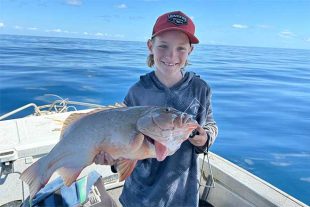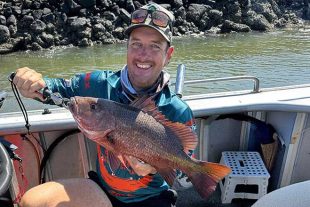The carp herpes virus urgently needs to be released into Australia’s freshwater rivers if we hope to protect our native fish populations and habitats.
This bold move is supported by Dr Martin Mallen-Cooper, one of Australia’s most respected river ecologists, who was a guest on the OzFish Unlimited official podcast Ozcast – A look below the surface.
The release would create a crucial window for native fish populations to strengthen their presence in the ecosystem, a strategy he believes is essential for long-term ecological balance.
“The virus kills carp,” Dr Mallen-Cooper said.
“But it doesn’t kill all of them – maybe 40-60 percent.
“The idea is you suppress the populations so the impacts are less, and then native fish can take off.”

According to Dr Mallen-Cooper, the science and research is now strong enough for Australia to confidently release the virus.
But he warns that to maximise the benefits during the critical recovery phase, we need to enhance habitat, manage river flows better, restore fish migrations and screen irrigation pumps.
It is combining these actions with a virus release strategy that are critical to bolster our native fish populations.
“The science looks very good and the risks are very transparent, so the virus would give breathing space for native fish to come back,” Dr Mallen-Cooper said.
“The two-pronged approach here is we tackle carp and bolster habitat – but you have got to improve flows.
“This gives native fish the best possible chance at the same time.”

When quizzed about how to prepare for an operation of this magnitude, Dr Mallen-Cooper started with the potential effectiveness of the virus.
“The research shows that the virus is not a concern for native species, such as Murray cod and golden perch,” he said.
“Overseas, it only occurs naturally in carp species.”
Understanding the environmental impact
First brought to Australia in the late 1800s, carp cause the most damage through their feeding habits.
Dr Mallen-Cooper explained that when carp are present in high densities, the suspended sediment could bring on more problems, including deterioration of water quality and increased nutrient levels.
“Carp constantly stir the sediments by feeding,” he said.
“They sort of siphon sediment and filter out invertebrates, then blow the sediment back out so you get more turbid water.
“And if you get more turbid water, the light can’t penetrate the water and aquatic plants can’t grow in it, and that starts to change the whole ecosystem.”
Dr Mallen-Cooper thinks it’s a self-defeating spiral we are in.
“Carp are not just changing the ecosystem,” he said.
“We have changed the ecosystem to suit them – we have modified rivers and the way we’ve modified rivers suits carp.
“But we can turn this around.”

River clean ups
A significant challenge is managing the aftermath of the virus and dead carp.
Just as we experienced with the Menindee fish kills in 2018 and 2023, dead fish raise community concerns around drinking water quality and the smell around our rivers and towns.
Dealing with dead fish of this magnitude is an important cog in deciding if and when the virus is released, but overall, the science and predicted results looks incredibly positive.
However, Dr Mallen-Cooper cautions that it’s wise to have a controlled release and strategy to go with it.
“We know what lots of dead fish do to water quality, so that’s an issue we have to be prepared for,” he said.
Since the introduction of carp in Australia, various control mechanisms have been implemented with limited success.
“In terms of methods of getting rid of carp, people have tried lots of things and on first glance they look pretty good,” Dr Mallen-Cooper said.

“You can take tons of carp out of rivers using cages at the top of fishways.
“You can also take out tons of carp by various fishing methods.
“But when you run the science around this, you don’t tend to damage the populations.
“You keep taking the population down a bit in local areas, but the carp keep bouncing back, from young fish or surrounding areas.”
In an interesting development, Dr Mallen-Cooper uncovers the notion that the carp virus might very well get to Australian rivers anyway, through it being unintentionally introduced.
In his opinion, Australia needs to be ready for the virus regardless.
“This is a naturally occurring virus with a long history, so it’s not a recent mutation,” he said.
“This virus is already in carp populations in other countries.”
As Australia grapples with how to address its carp problem, you can tune in to the podcast for the full episode where Dr Mallen-Cooper offers valuable insights into the potential benefits and challenges of introducing the carp herpes virus for the revival of our rivers and native fish.
OzFish Unlimited
 Bush ‘n Beach Fishing Magazine Location reports & tips for fishing, boating, camping, kayaking, 4WDing in Queensland and Northern NSW
Bush ‘n Beach Fishing Magazine Location reports & tips for fishing, boating, camping, kayaking, 4WDing in Queensland and Northern NSW









